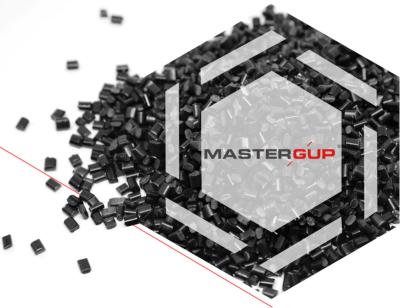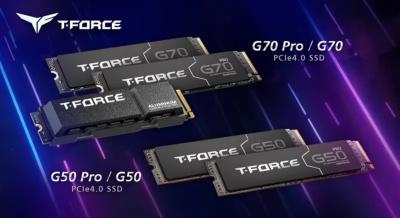Graphene thermal conductivity - introduction and latest news - Page 2
Graphene Composites USA selected to join U.S Military footwear project
Graphene Composites USA (GC) has been selected to participate in a research and development program between DEVCOM Soldier Center, Natick MA and UMass Lowell, to develop materials for the next generation of U.S. military footwear.
The program, SWIFT [Supporting Warfighters through Innovative Footwear Technologies], is offered by the HEROES (Harnessing Emerging Research Opportunities to Empower Soldiers) initiative and will see GC extend its patented GC Composite graphene and aerogel technology to develop ultra-lightweight, durable, insulative materials for use in extreme cold weather.
Researchers develop new approach for controlling thermal emission
Researchers from the University of Manchester, The Pennsylvania State University, Koç University and Vienna University of Technology (TU Wien) have tackled the challenge of control of thermal radiation, demonstrating a new topology-based approach.
The team explained that conventional approaches to tailoring thermal emission using metamaterials are hampered both by the limited spatial resolution of the required subwavelength material structures and by the materials’ strong absorption in the infrared. In their recent work, the scientists developed an approach based on the concept of topology: by changing a single parameter of a multilayer coating, they were able to control the reflection topology of a surface, with the critical point of zero reflection being topologically protected.
Haydale demonstrates graphene ‘Hot Seat’ at the Advanced Materials Show 2024
Haydale recently displayed, for the first time in public, its revolutionary new solution to automotive seat heating labelled the ‘Hot Seat’ at the NEC in Birmingham. Using the Company's patented process and unique materials, Haydale has developed an alternative to existing automotive seat heating technology.
This interesting graphene application is based on the production of a seat heater that is faster to heat, uses less energy and offers a green and eco-friendly alternative to the current solutions. Using the same technology in place for their Underfloor Heating range of products under development, Haydale has now adapted this to provide a novel application for heated seating.
Graphene-based masterbatches: Marrying performance with ecological responsibility
GrapheneUP®, an industry vanguard in manufacturing verified few-layer graphene and a diverse array of graphene-centric intermediary products, announces the debut of MASTERGUP® — an innovative line of thermoplastic masterbatches. This breakthrough harnesses the transformative potential of graphene, setting a new benchmark for sustainability and recyclability within multiple sectors.
Graphene, distinguished by its exceptional strength and conductivity, imparts enhanced thermoplastic properties, including mechanical robustness, thermal stability, and gas barrier properties. These advancements extend the lifespan of products and significantly reduce waste, thereby contributing to more excellent environmental stewardship. Moreover, incorporating the graphene GUP® into thermoplastic matrices elevates processability, streamlining the molding, reshaping, and recycling processes. GUP®-fortified thermoplastics demonstrate remarkable endurance through repeated recycling, mitigating material degradation — a commendable achievement in material sustainability.
Nottingham houses test graphene-infused infrared wallpaper
A trial is underway in 45 social housing groups across the UK that could revolutionize the way we heat our homes, especially those that have long battled with issues like heat leakage and inefficient insulation. A graphene-enhanced infrared wallpaper, developed by NexGen Heating, is being tested in a project targeting social housing and older properties that are notoriously hard to insulate.
By infusing wallpaper with graphene, NexGen Heating has created a product that emits infrared heat, warming objects and people directly in a manner reminiscent of sunlight. This direct form of heating is not only efficient but also customizable to fit the aesthetics of any room, promising an unobtrusive addition to homes. Furthermore, the potential for integration with solar panels and batteries could make this a cornerstone of sustainable living, significantly reducing reliance on fossil fuels. NexGen Heating says infrared can provide greener, cheaper heating when paired with solar panels and batteries.
Researchers review graphene's potential and limitations for cooling solar panels
Researchers at Monash University Malaysia and Tunku Abdul Rahman University of Management and Technology have studied how graphene and graphene derivatives could be used as materials to reduce the operating temperature of solar panels. They reviewed the limitations and potential of solar module cooling techniques based on graphene and found that high costs and graphene treatments are the main challenges to overcome.
In a recent in-depth review, the team explained that graphene has attracted the interest of the scientific community as a medium to enhance heat transfers in cooling systems. When used for PV cooling applications, graphene can be used in different ways. For example, as a selective absorber coating or embedding it into a working fluid as a nanofluid. Graphene nanoparticles can also be added to thermal interface materials (TIMs) or phase change materials (PCMs) used for solar module cooling.
Researchers develop novel graphene coating that converts waste heat into electrical energy
Researchers at the University of Sussex and the University of Brighton have presented their recent work on thermoelectric capture, using highly conductive graphene sheets, which aims to improve technologies that capture and convert heat into electricity and tackle the barriers standing before these methods. The aims to advance the possibility of cheap, sustainable technologies for heat capture and conversion – as well as reach a new understanding of how conductivity in graphene-based nanomaterials can be best exploited.
The team assembled nanomaterial networks of varying density and size, from few to many layers of graphene sheets, then measured electrical conductivity as the different arrays were exposed to heat. Their expectation was that the assemblies of larger, thicker sheets would exhibit the highest levels of conductivity but in fact, the opposite outcome was observed, where the smaller, thinner sheets spontaneously formed dense-packed arrays, and performed better than the many-layered samples.
Haydale secures SMART funding to accelerate development of graphene infused heat transfer fluids
Haydale has announced the award of a SMART Flexible Innovation Support Grant ("SMART FIS") from the Welsh Government, to accelerate development of ultra-efficient, graphene infused heat transfer fluids. This support will assist in the development and proof of concept of scientific innovations, in a commercial setting.
Hydratech, a division of Liquitherm Technologies Group and longtime manufacturer of aqueous-based heat transfer fluids, have been awarded a collaborative SMART FIS to work in partnership with Haydale on the project.
Purdue team claims graphene's thermal conductance properties may not be as impressive as previously thought
Purdue researchers have examined graphene's thermal properties and found they may not be as revolutionary as previously thought.
Graphene is often touted as the world's best heat conductor, surpassing diamond - which was previously thought to be able to transfer the most heat the quickest. Diamond’s thermal conductivity is generally understood to be about 2,000 W/(m K). But when scientists started measuring graphene’s thermal conductivity, early estimates reached above 5,000 W/(m K). However, subsequent experimental measurements and modeling have refined graphene’s thermal conductivity and brought the number down to around 3,000, which is still quite better than diamond. The Purdue team focused n this graphene property and found something altogether different.
TEAMGROUP launches new G Series SSDs with graphene heatsinks
TeamGroup has announced that its portfolio of high-speed solid state drives (SSDs) is expanding, with the launch of four new models, including the T-Force G70 Pro, T-Force G70, T-Force G50 Pro, and T-Force G50.
TEAMGROUP’s new T-Force G70, G70 Pro, G50 and G50 Pro are the company’s latest SSDs available in the M.2 2280 format. Each of these SSDs comes fitted with patented ultra-thin graphene heatsinks, however the G70 Pro is also available with an aluminium alloy heatsink that also fits within the PS5 SSD expansion slot.
Pagination
- Previous page
- Page 2
- Next page

